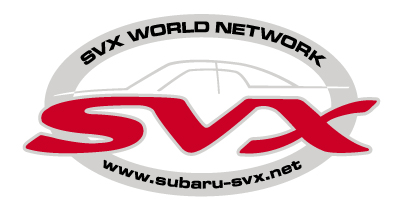
Live Chat!
SVX or Subaru Links
Old Lockers
Photo Post
How-To Documents
Message Archive
SVX Shop Search
 |
SVX Network Forums Live Chat! SVX or Subaru Links Old Lockers Photo Post How-To Documents Message Archive SVX Shop Search |
IRC users: |
|
#1
|
|||
|
|||
|
Automatic Transmission Fluid
Automatic Transmission Fluid
Author: Subaru TRANSMISSION: ALL BULLETIN: # 9002006 SUBJECT: Automatic Transmission Fluid DATE: Feb 1990 AUTOMATIC TRANSMISSION FLUID CHOOSING YOUR ATF Different ATF's (Automatic Transmission Fluid) can have different frictional properties which can produce different shift characteristics. You may have already experienced problems like lock-up shudder, or squawks on shifts and have corrected them by changing the fluid. This alone tells, you that friction material and fluids are critical in today's cars. MEETING THE O.E.M. SPECIFICATIONS The first thing to consider when choosing an ATF is "Does it meet the O.E.M. specification?" ATF's wishing to be labeled as DEXRON II and/or MERCON must first meet the respective minimum requirements. It's important to note that even though the specification for DEXRON II and MERCON are currently very similar, THEY ARE NOT IDENTICAL. Also note, even fluids which meet the same specification may not be identical. One fluid may just meet a specification and, another may far surpass it. You should know what your fluids properties are! You can get that information from your fluid supplier. EVALUATING YOUR FLUID Ask your supplier to prove (certify) that the fluid meets O.E.M. specifications (MERCON OR DEXRON II). He will do that by supplying you with the license (certification) number issued to him by the O.E.M. A DEXRON-II license number (sometimes referred to as a "D" number) will always start D-2. A typical DEXRON license number can be seen in Figure 2. MERCON license numbers will be six digits starting with M as shown in Figure 3. TRY TO MEET SEVERAL SPECIFICATIONS! DEXRON II and MERCON have different minimum specifications, so a product that meets BOTH specifications may be better then those meeting only one spec. Meeting other specs, in addition to the first two can be an added benefit. If a fluid is licensed as DEXRON II AND MERCON as well as others like Allison C-4, or Caterpillar TO-2/TO-4, it means the fluid had to pass more tests and may be a better fluid. Lastly, demand that the license numbers be placed on all your invoices especially if you buy in bulk. If your supplier is unwilling, it is very likely that they are supplying you an unlicensed fluid. Licensed suppliers are required to supply the license numbers to their customers as part of their agreement with the O.E.M. OTHER THINGS TO CHECK So now you've narrowed your choices down to a few suppliers that have O.E.M. license numbers. How do you compare two fluids that meet the same O.E.M. Spec.? Ask your supplier to give you the viscometrics on the fluid you buy. An excellent "bench mark of the overall quality of a fluid is its viscosity at -40 degrees. This is measured in "centipoise" or "cPs". DEXRON II specification says viscosity will be no more then 50,000 cPs @ - 40 degrees. (Some poor fluids have tested at over 1,000,000 cPs) In general, the lower the number, the better the fluid. Keep in mind that as the number goes down the price of the fluid usually goes up. (You get what you pay for) Most good fluids will average around 35,000 cPs. Hydrotreated (or Hydrocracked) fluids average around 20,000 cPs or less. (Hydrotreating is a refining process done to the base oil to clean out contaminants or impurities) Synthetic ATF's average 10,000 cPs or less, and some are as low as 5000 cPs. Viscosity at -40 degrees is a function of the base stock from which the ATF is made. A low number indicates a premium base oil OR an expensive refining process. (Hydrotreating) FOR ADDITIONAL INFORMATION: Transmission Digest August '89 Page 91 / December '89 Page 51 BULLETIN RECAP 1) Only use fluids with O.E.M. approvals. 2) Try to get a fluid that meets more than one spec (e.g DEXRON II AND MERCON) 3) Check the viscosity at -40 degrees. The lower the number the better. 4) Avoid bargain basement fluids with no license numbers. . |
|
|